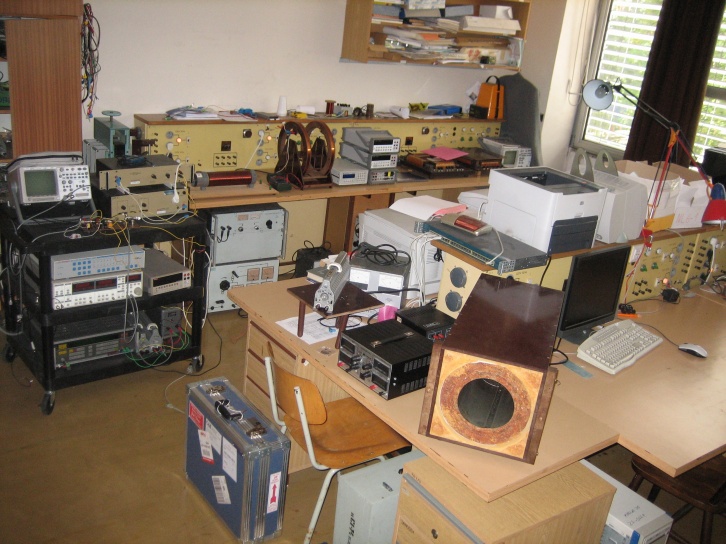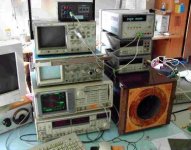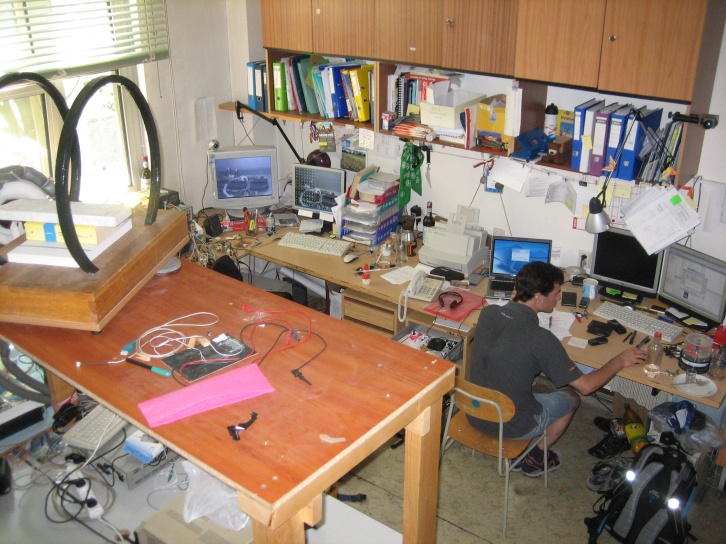MAGLAB is located on the ground floor of the main building of the Faculty of Electrical Engineering and in adjacent areas. We have four main laboratories (room 70, 73, F1-9 and G1-17) where our research activity is carried out.
Moreover we have access to the laboratory of Pruhonice, in the suburb area close to Prague, which is completely made of wood and other non-magnetic materials and is far enough from the city to have low magnetic noise.
Equipment
We strongly believe in the importance of practical experiments as the base for scientific research. That’s why MAGLAB invested many funds in the more advanced measurement instruments. Here is a list of the main devices at MAGLAB disposal, which are used every day by the members of the group.
- Dual Phase DSP Lock-in Amplifier Signal Recovery 7265
- 200 MHz RF lock-in amplifier SR8844
- 50 MHz DSP lock-in amplifier HF2LI (Zurich Instruments)
- 2 MHz DSP lock-in amplifier SR865
- 100 kHz DSP lock-in amplifiers SR830
- Agilent 4284A LCR meter, 20Hz to 1MHz.
- 4285A Precision LCR Meter, 75 kHz to 30 MHz
- 2 HP33120A 15MHz Function/Arbitrary Waveform Generator
- 3 Agilent Megazoom Oscilloscopes
- LeCroy Wavesurfer HD 4096 Oscilloscope
- Dual Channel System for signal processing (2 Boxcar averagers + Dual Channel ADC)
- 3 Magnetic shields (6 layers), one of them with built-in thermostat
- Numerous Helmholtz coils of various sizes, solenoids and electromagnets
- LakeShore Model 480 Fluxmeter
- LakeShore Model 450 Gaussmeter
- 35670A 2 channel FFT Dynamic Signal Analyzer, DC-102.4 kHz
- Low-noise voltage preamplifier SR560
- Kepco BOP Power supplies (50V-8A,100V-2A,200V-1A)
- DC power supply, 0-20 V, 0-10 A, 200 W. GPIB
- Techron 7548 Power amplifier (200V, 40A, 0-50 kHz)
- Amplifier Reseach Model 800A3 3MHz/800W
- Sorensen SGX DC power supply (10V, 1200A)
- Evico Kerr Combined Microscope and Magnetometer
Facility
In our laboratories we are able to provide many different kinds of measurements. We can offer not only the facility and instruments needed but most importantly the long term experience of our staff with such measurements. Here we mention some of them:
- Noise measurements and characterization of magnetic sensors and magnetometers
- Testing of temperature dependence of the offset and sensitivity of magnetic sensors in -20C to +80C range (-40 to 140°C soon)
- Testing of frequency dependence
- Cross-field testing
- Testing of an angular misalignment
- Calibration of magnetic sensors and magnetometers
- Measurement of hysteresis loops of ferromagnetic and superparamagnetic materials
- Measurement of susceptibility, remanence and coercivity
- Magnetoptical domain imaging and measurement of magnetisation characteristics



